Product
Nero Wairua te Ao Hou McCann Asher Kākā Pod
-
Tauira / Student
Nero Wairua te Ao Hou McCann Asher -
Kaiako / Lecturers
Rodney Adank, Jason Mitchell
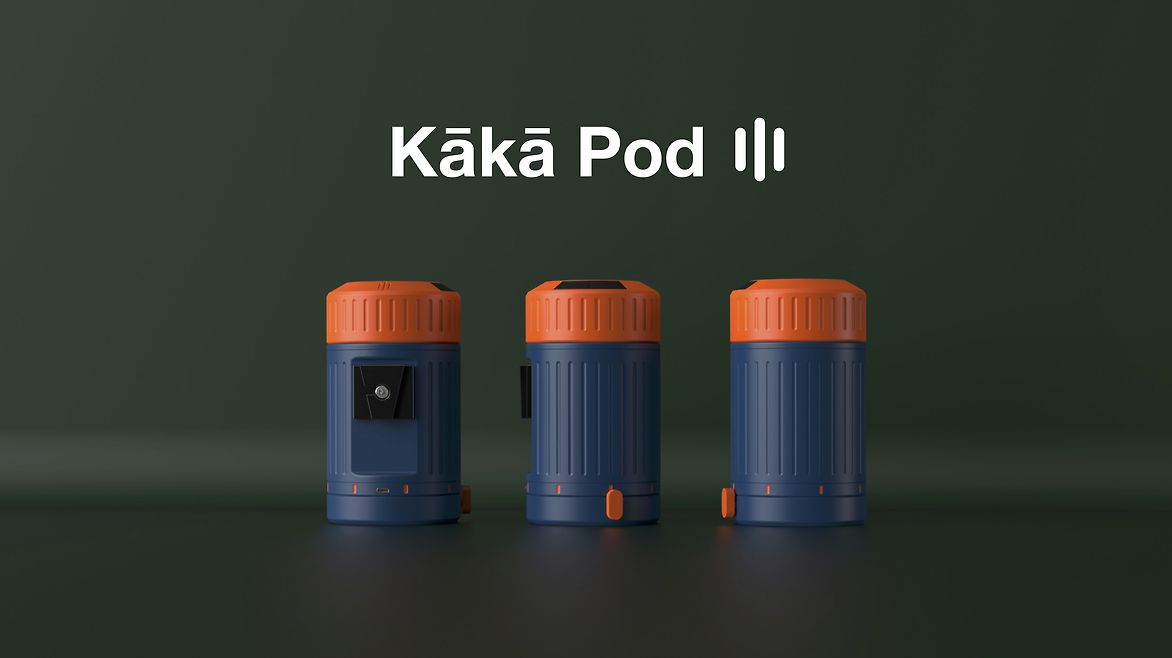


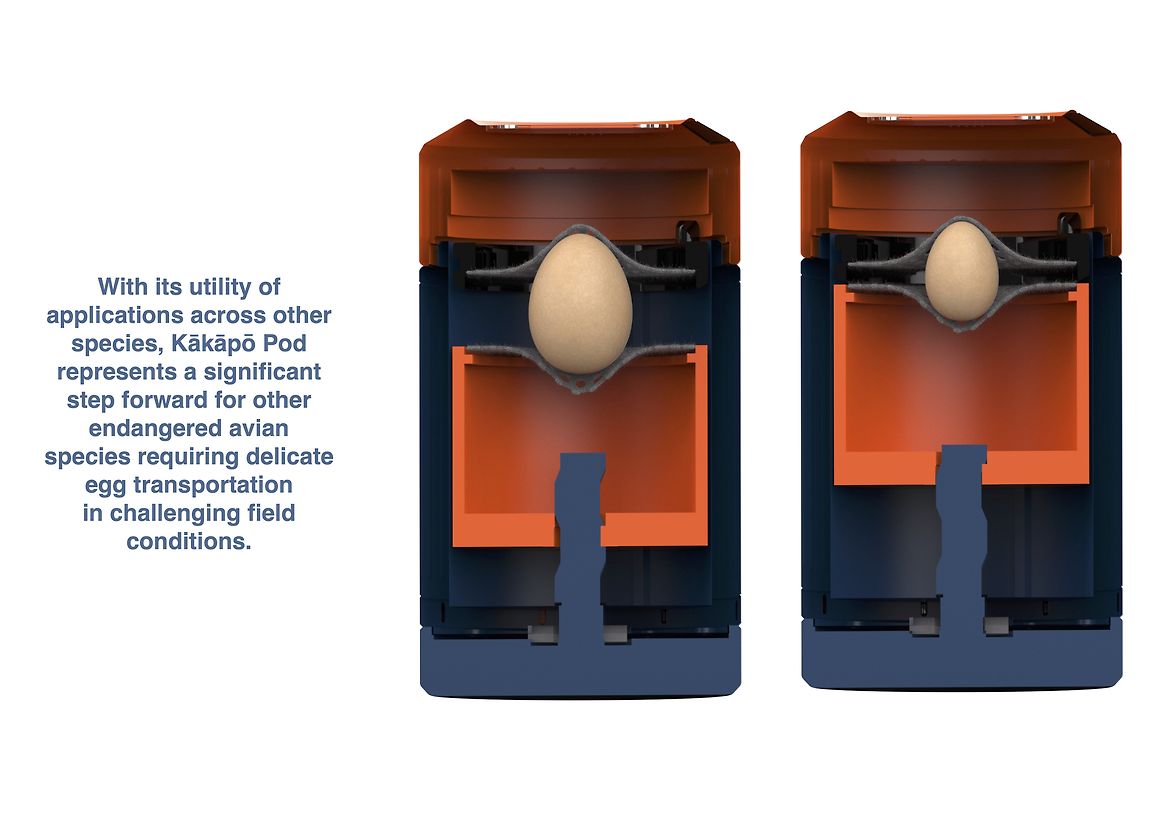
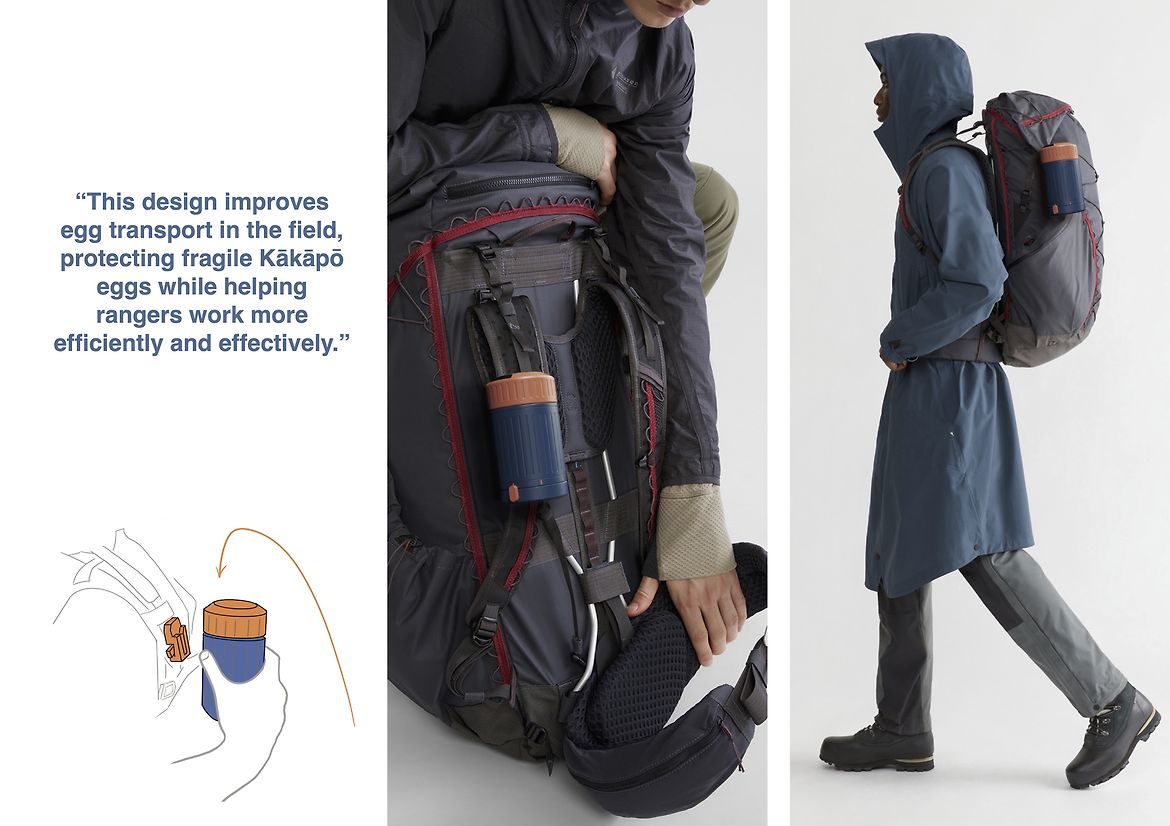
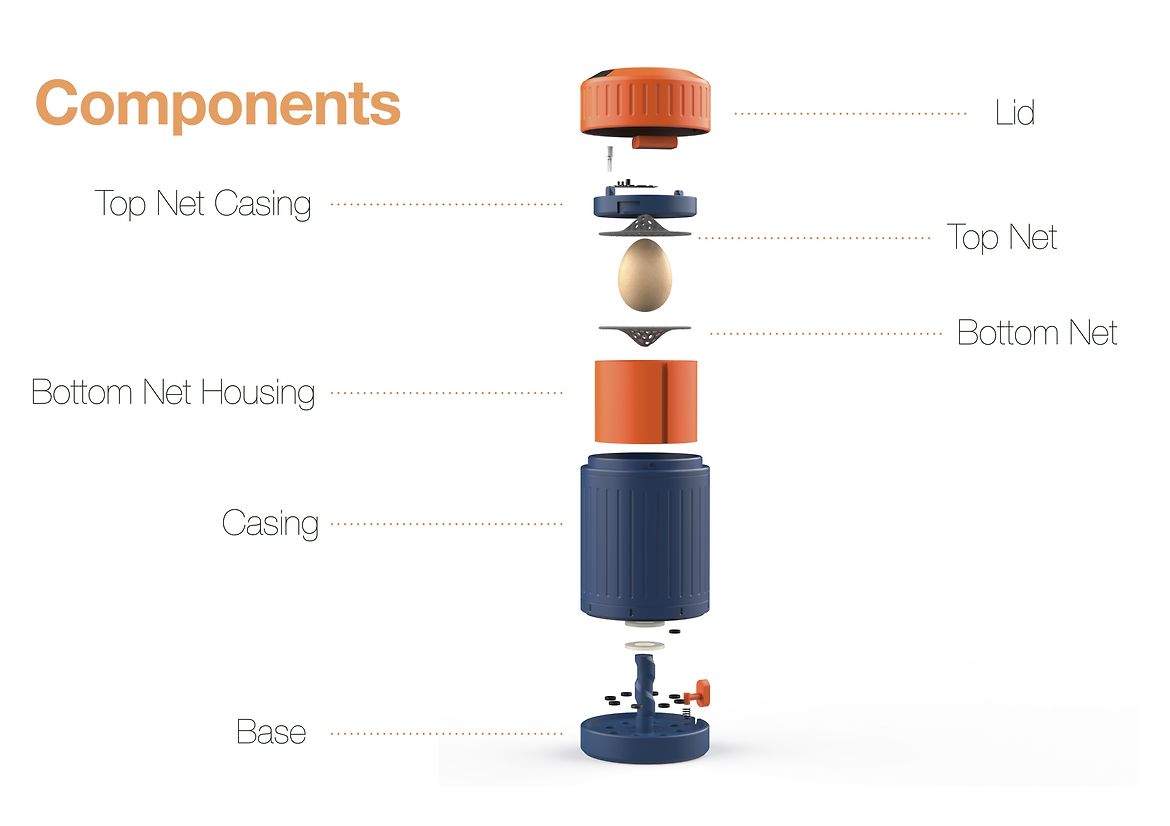
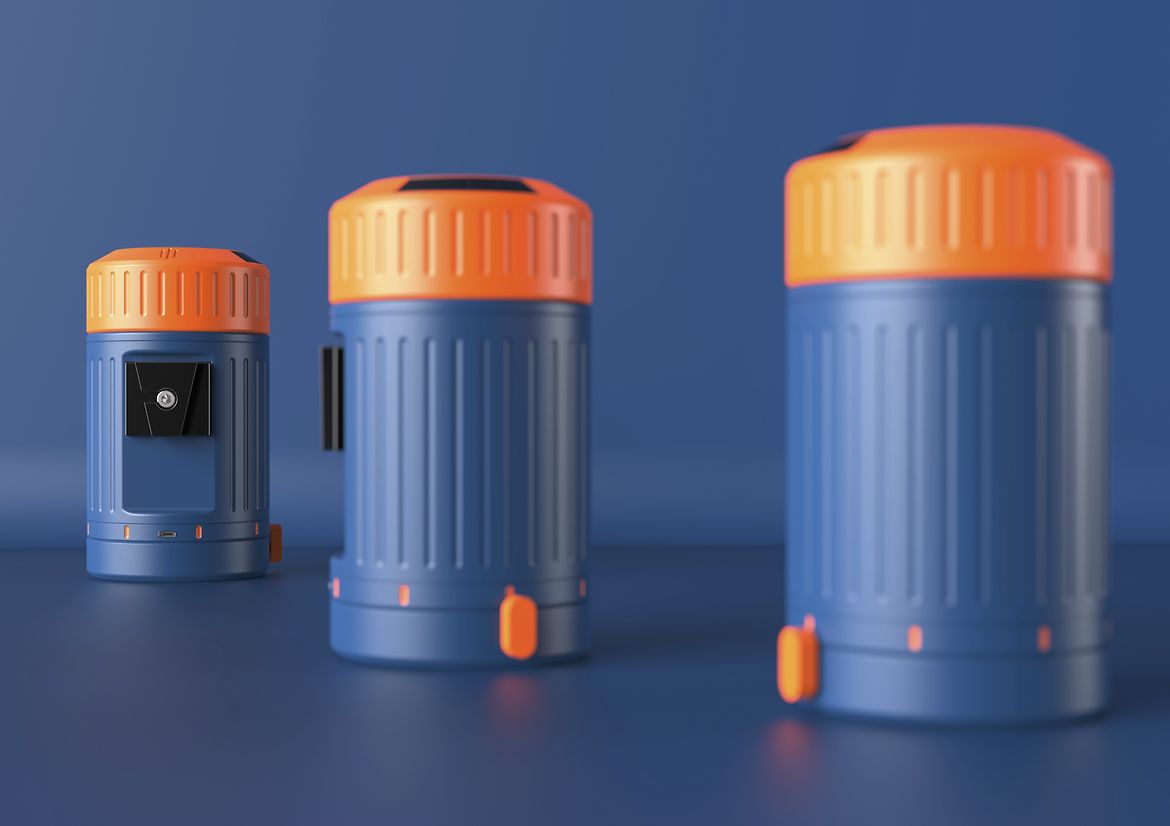
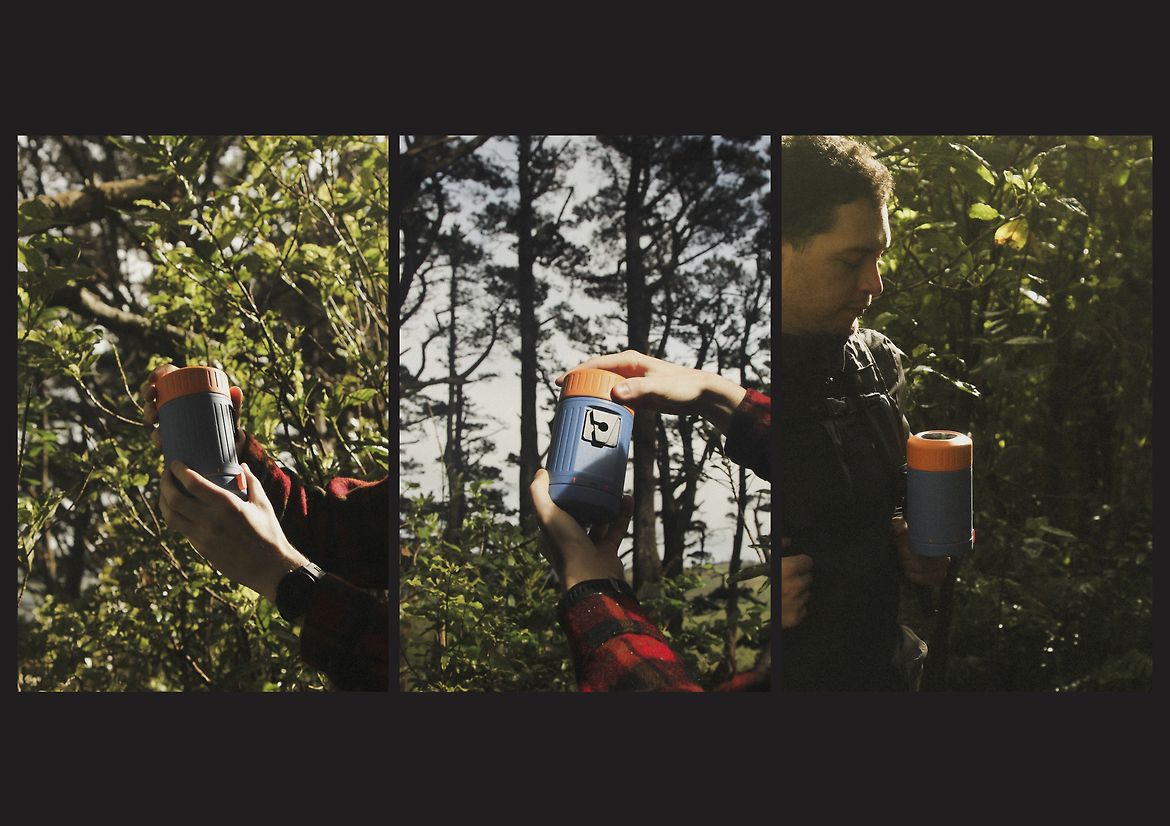
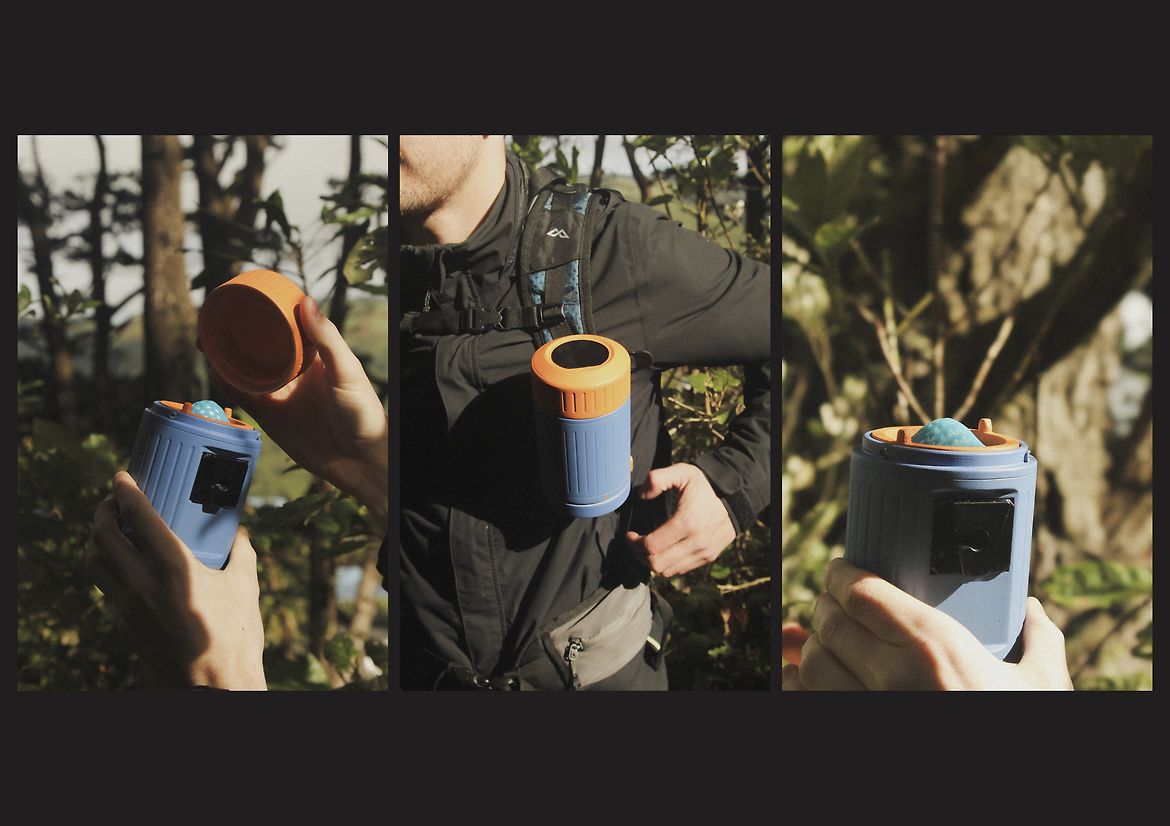
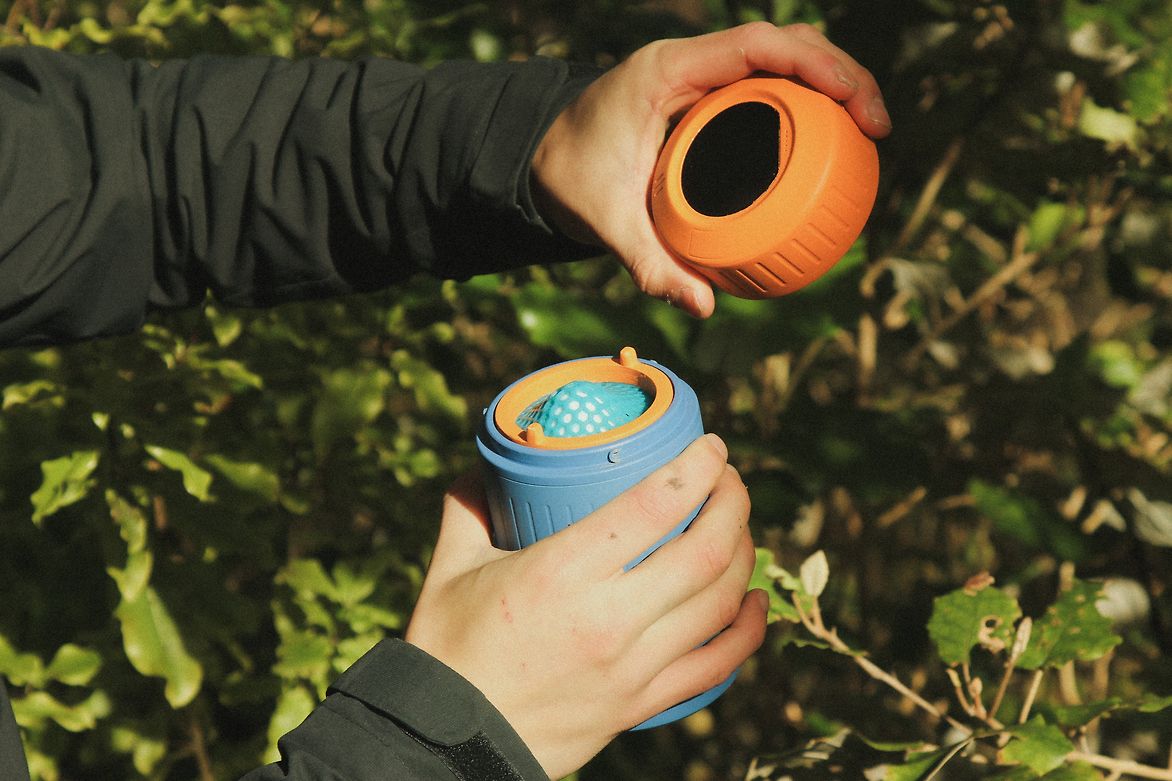
Description:
Kākā Pod: A Portable Incubator for Native Bird Conservation
New Zealand’s endemic parrot species face a critical conservation challenge. The Kākāpō, in particular, is flightless, nocturnal, and breeds infrequently, making every egg crucial to the species’ survival. Conservation rangers often transport eggs from remote offshore islands to mainland incubation centres. Existing solutions—large, hospital-grade incubators—are poorly suited to rugged terrain and fieldwork. This project aimed to design a portable, durable incubator that maintains stable environmental conditions while supporting field-based conservation efforts.
The concept was to merge biological care with practicality. Research into avian embryology, ranger workflows, and backcountry tools informed a solution that strikes a balance between biological sensitivity and rugged usability. The idea became a pod that could be worn on the front of the body or clipped to a tramping pack. The design combined protection (shock absorption, insulation) with active thermal and airflow control to support stable incubation during challenging field missions.
The Kākā Pod is a compact, ergonomic incubator designed for hands-free carry. Its outer shell is tough, injection-moulded plastic that protects against impact. Inside, the egg is suspended within flexible, food-grade silicone membranes, allowing it to “float” and absorb shock without rigid foam or complex mechanical systems.
A radial venting system evenly circulates warm air to prevent hotspots and cold zones. A simple, low-profile digital interface provides key environmental readings. Batteries and heating modules are modular and replaceable, ensuring continued use across multi-day fieldwork.
Fit for purpose: Lightweight and shaped to avoid snag points, the pod’s controls and access points are optimised for quick use in cold, wet, or low-visibility conditions. The silicone cradle adjusts to different egg sizes and resists microbial growth for hygienic long-term use.
Aesthetic/Style: The form blends the language of tramping gear and medical tools—technical, durable, and soft. Bright, contrasting colours were chosen to maximise visibility in dense bush, reducing the risk of misplacement. The pod’s clean design signals its biological importance while remaining practical and familiar in both wild and lab settings.
Technical resolution: Prototypes were tested for thermal consistency, impact resistance, and airflow distribution. Materials and finishes were selected for their durability, cleanability, and modular maintenance in harsh conditions.
The Kākā Pod redefines how conservation tools are designed, shifting from improvised gear to solutions tailored for the realities of remote, high-stakes work. It enables field rangers to transport fragile eggs with greater safety, efficiency, and confidence. Its suspension cradle offers passive protection beyond traditional incubators, while active systems maintain biological integrity. The result is not just a functional device, but a specialised tool for protecting life at its most vulnerable.
Judge's comments:
A considered response to the challenges of field-based conservation, balancing care with practical usability. Compact, useful and ergonomic, the Kakā Pod would support rangers in safeguarding Aotearoa’s most vulnerable species.